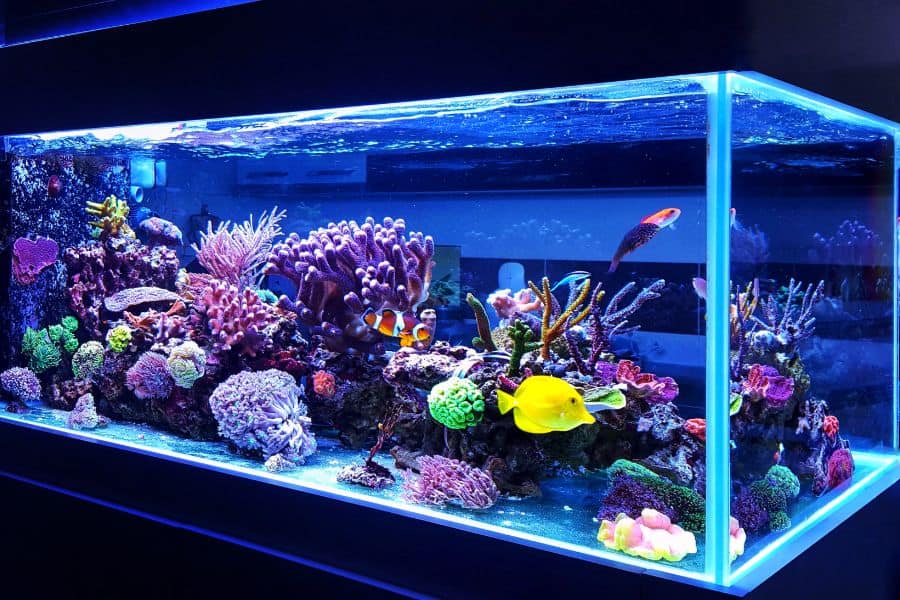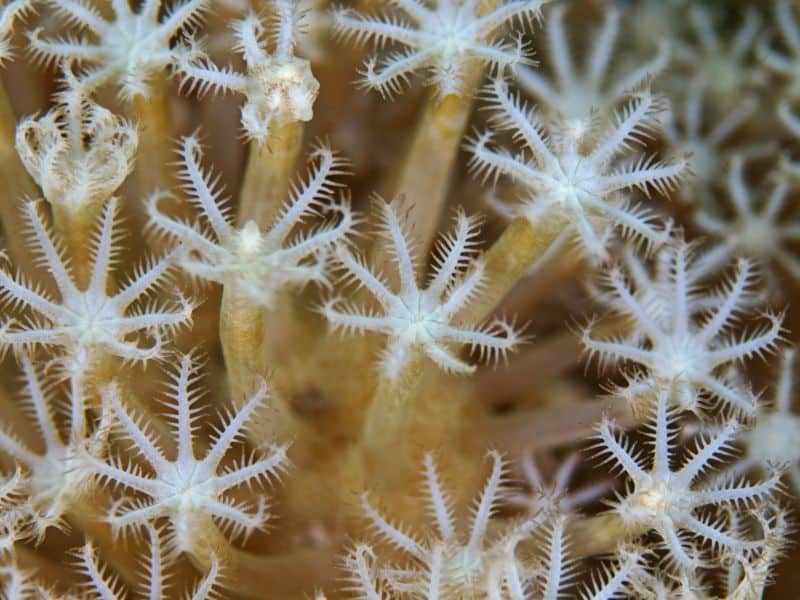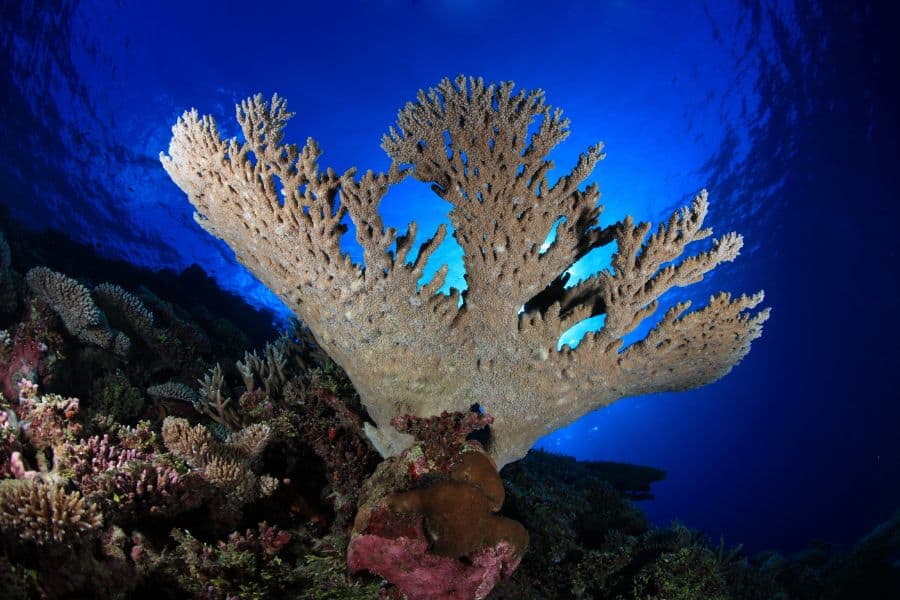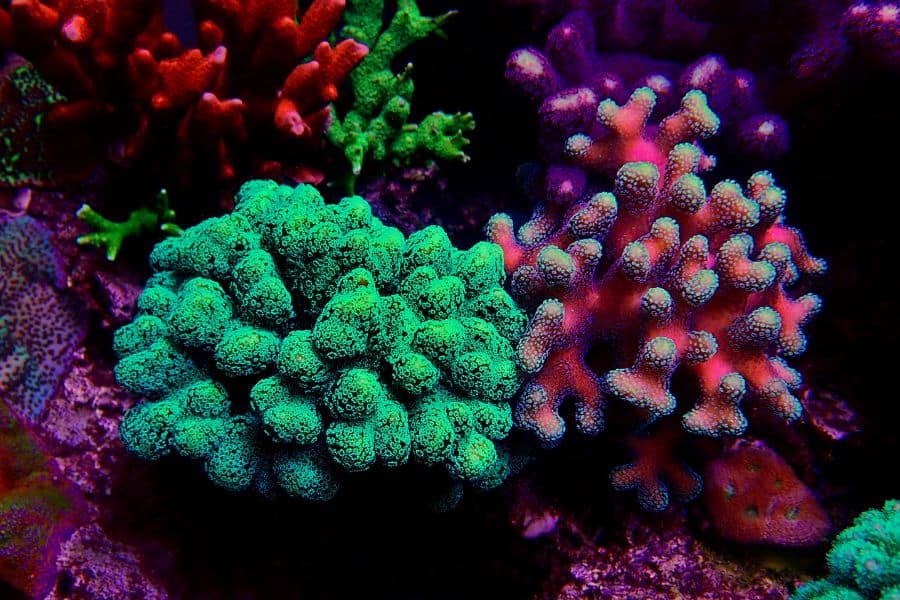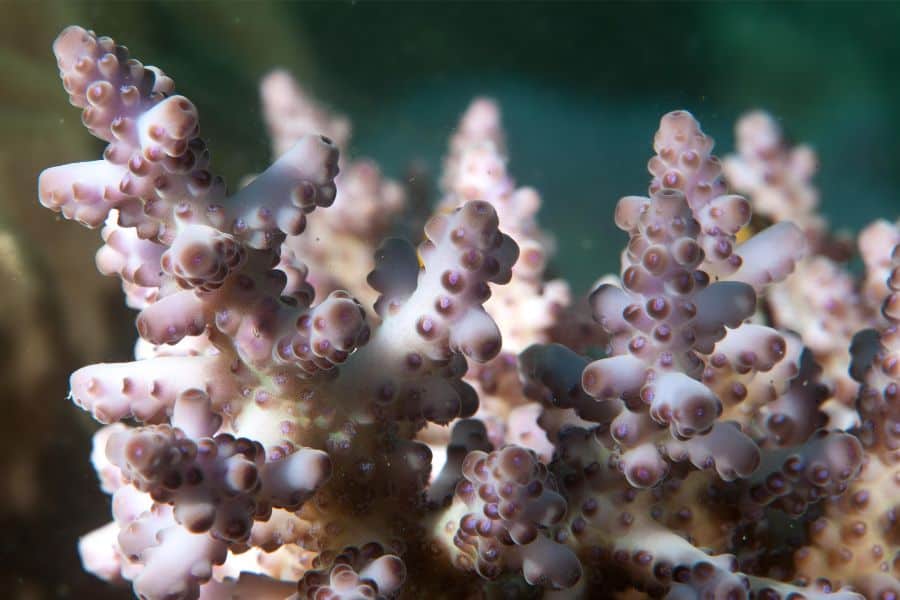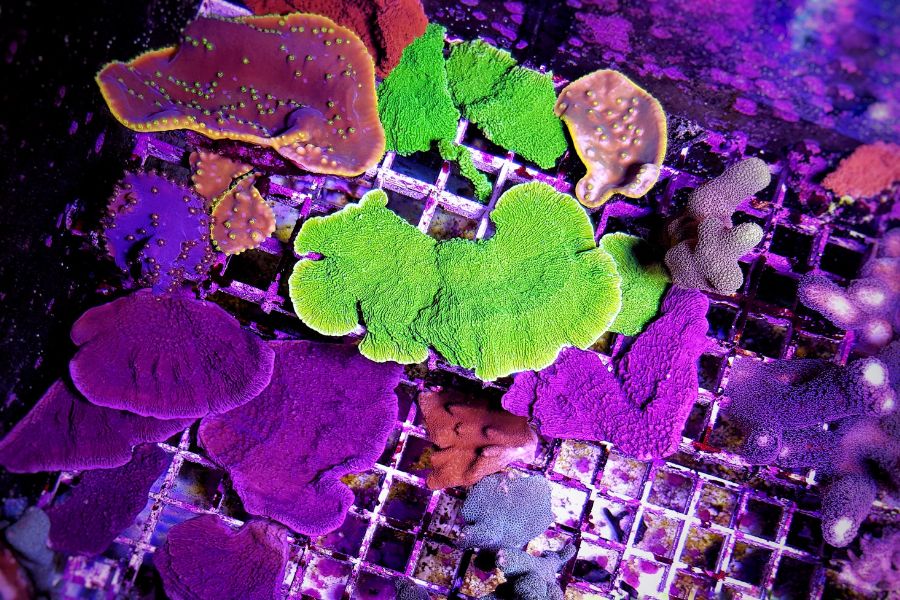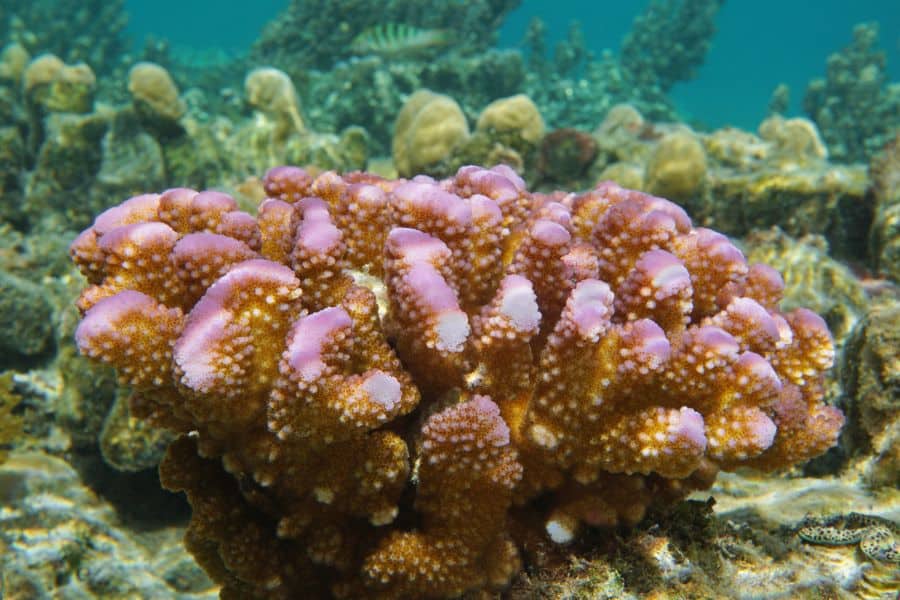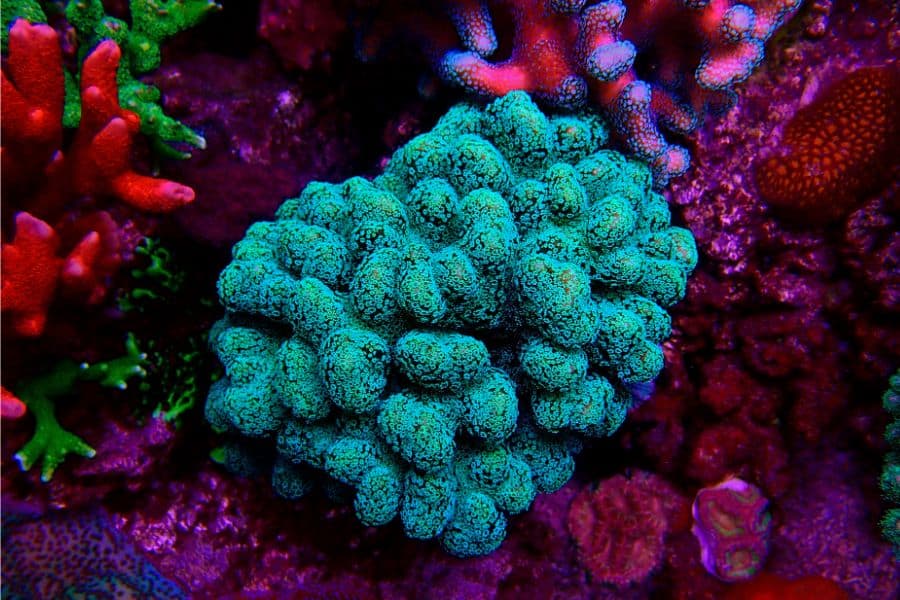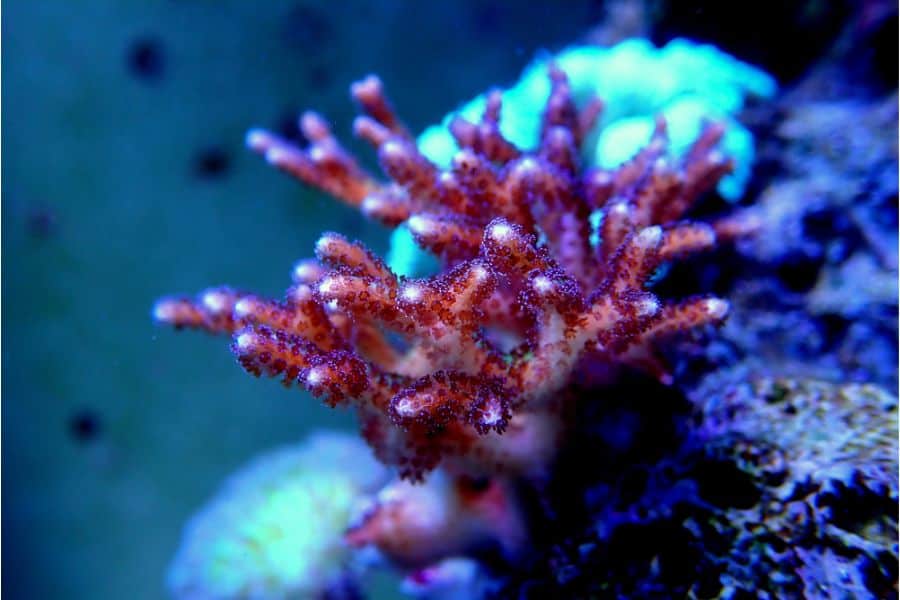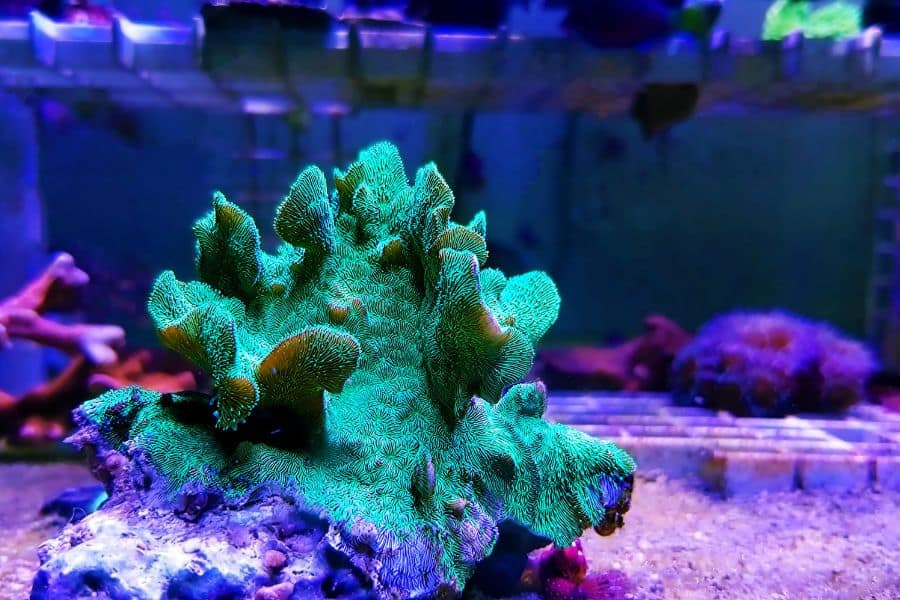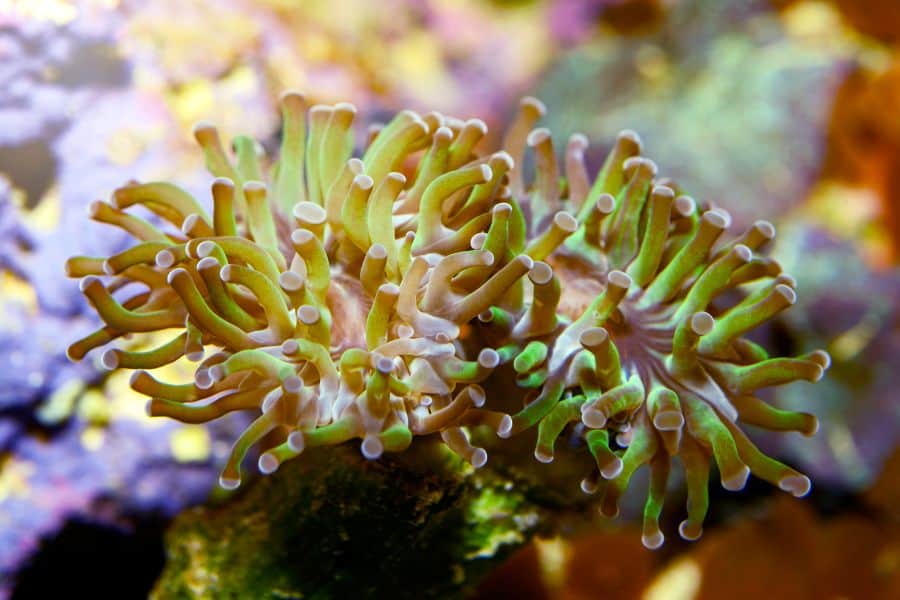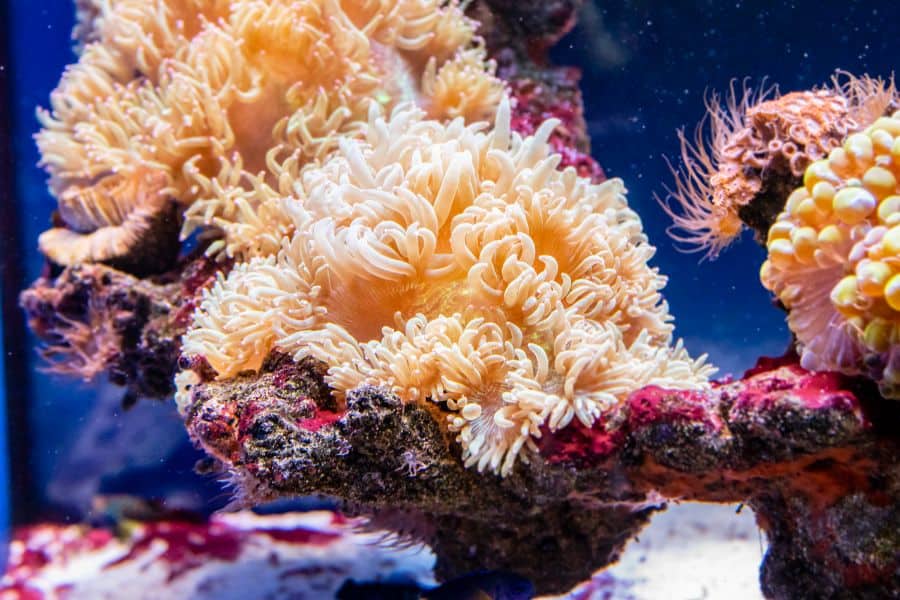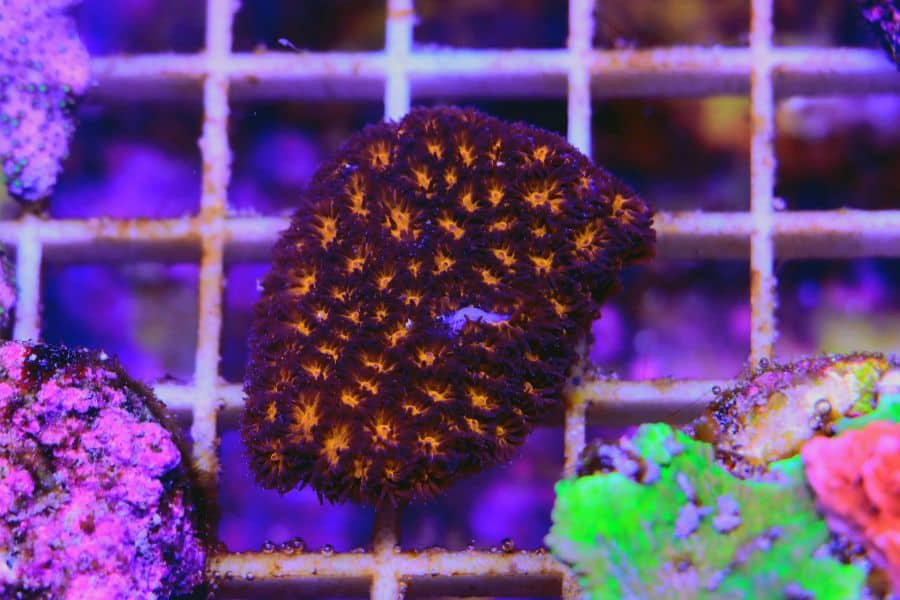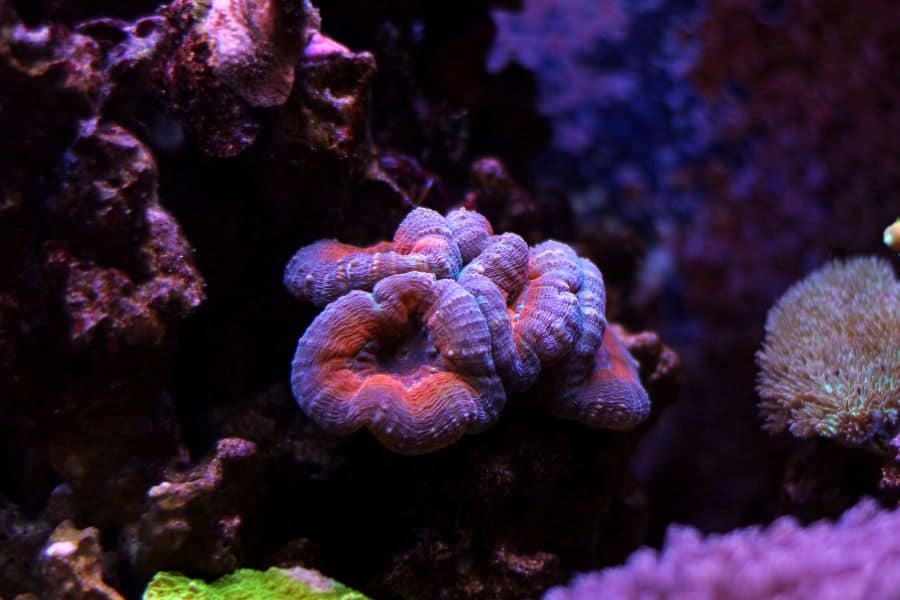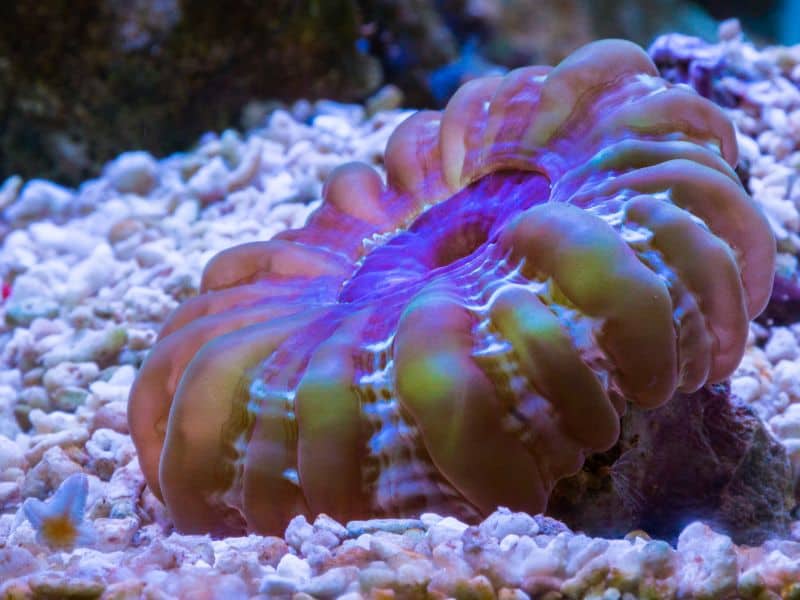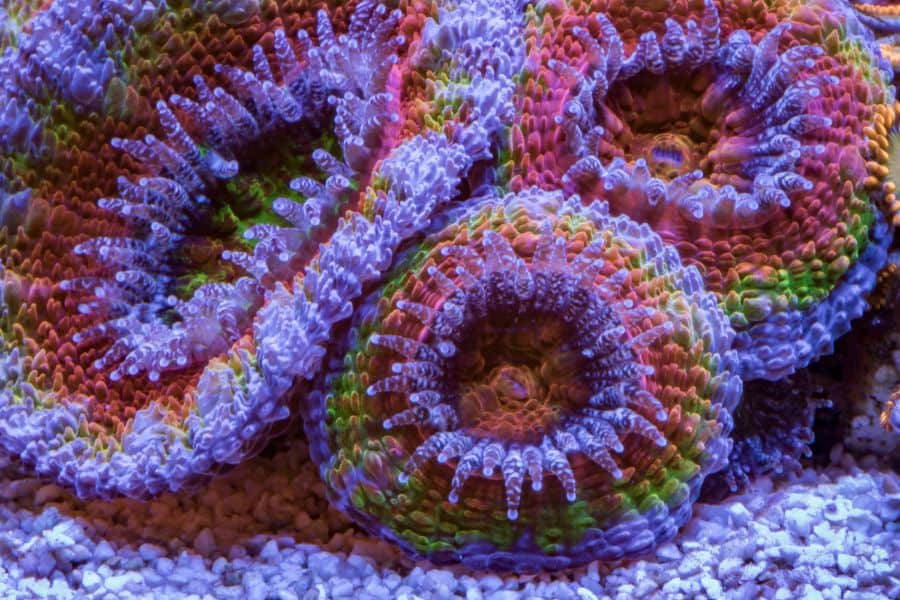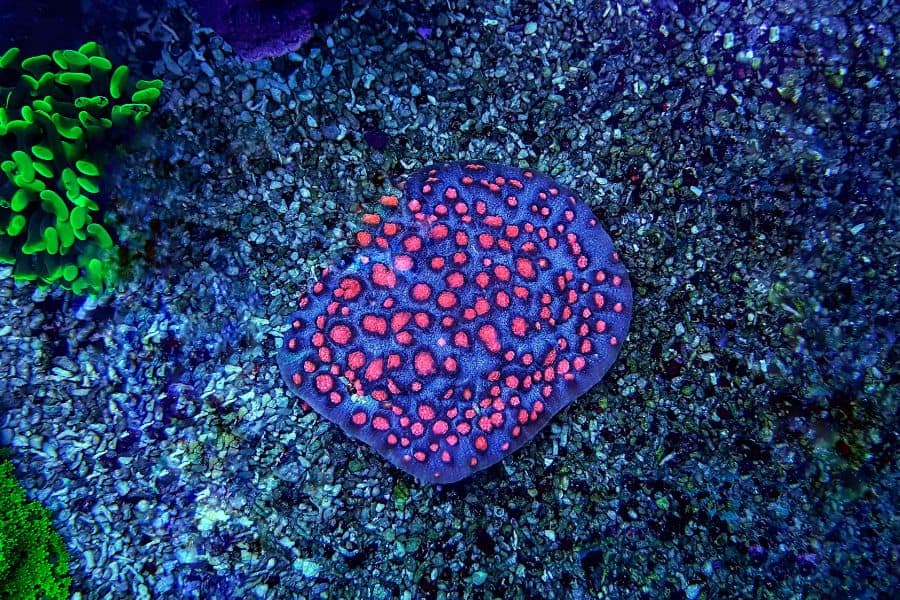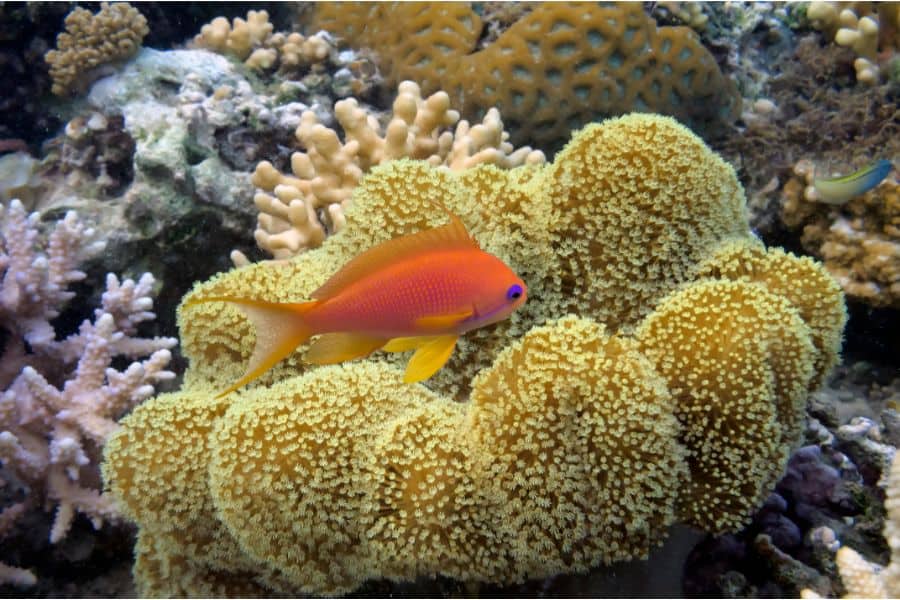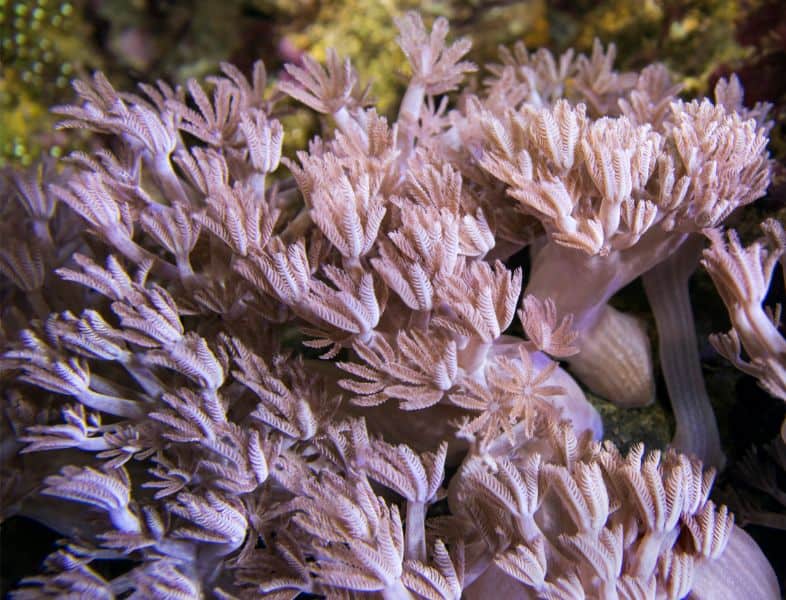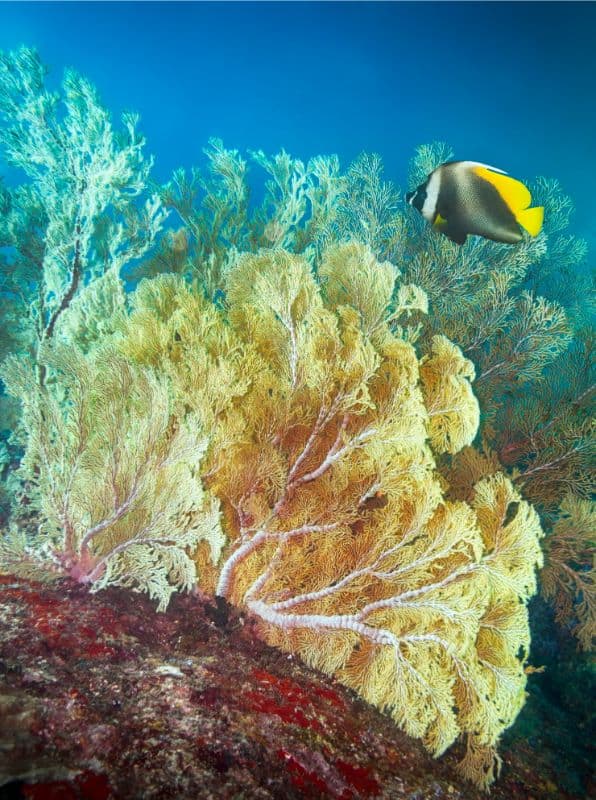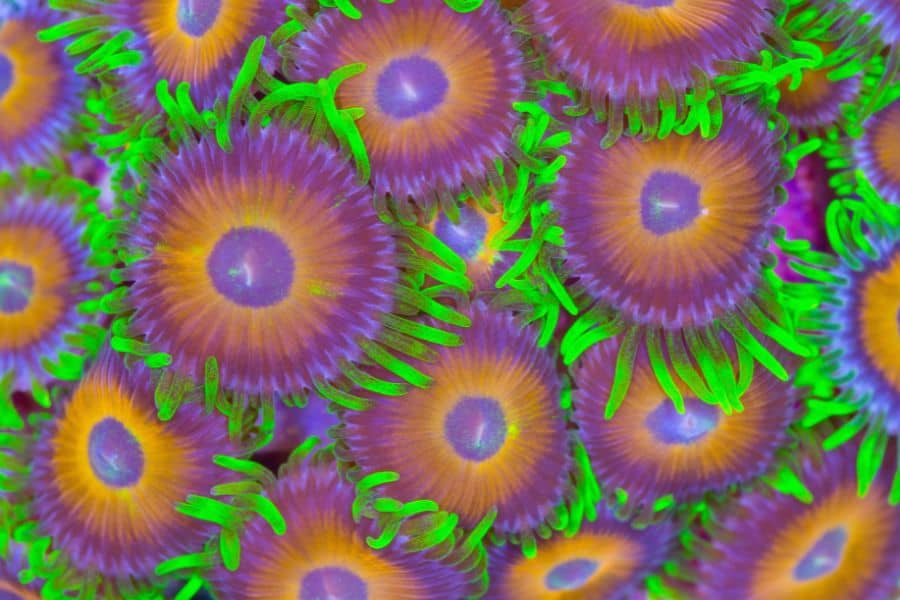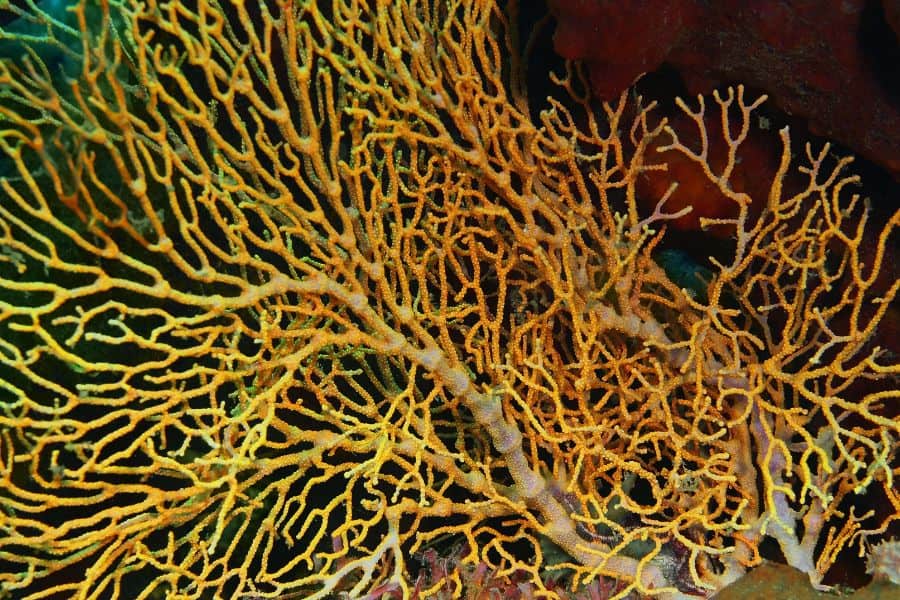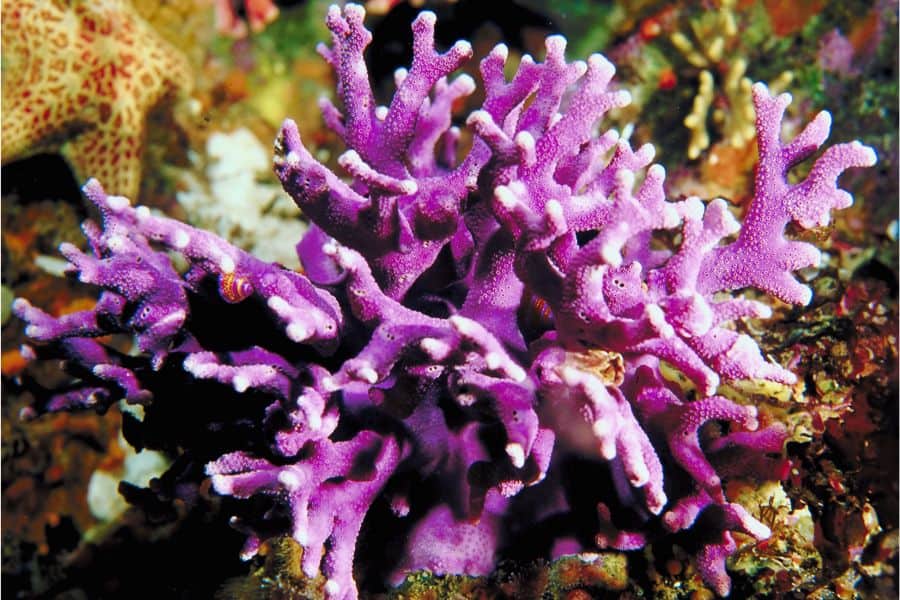Corals are a regular attraction in a saltwater aquarium, and these marine invertebrates (yes, they are not plants) have over 6,000 species. While there are many choices, most aquarists choose the type of corals with traits that are compatible with their tank condition.
Some of the characteristics of corals you may consider include skeletal structure, size of the polyp, and growth habits. But could this also be the basis for how they are classified?
Join us in this article as we present the easiest way to classify and identify the different types of corals.
Types of Corals according to the Number of Polyp Tentacles
Each coral is a colony composed of several tiny animals called polyps. While soft like a gel, these polyps secrete calcium carbonate and use it to create a hard external skeleton called calicles. In effect, the exoskeleton secures the polyp within, and the part we see is only their mouth surrounded by tentacles.
Looking closely at each polyp, we can classify two types of corals based on the number of tentacles.
Hexacorals
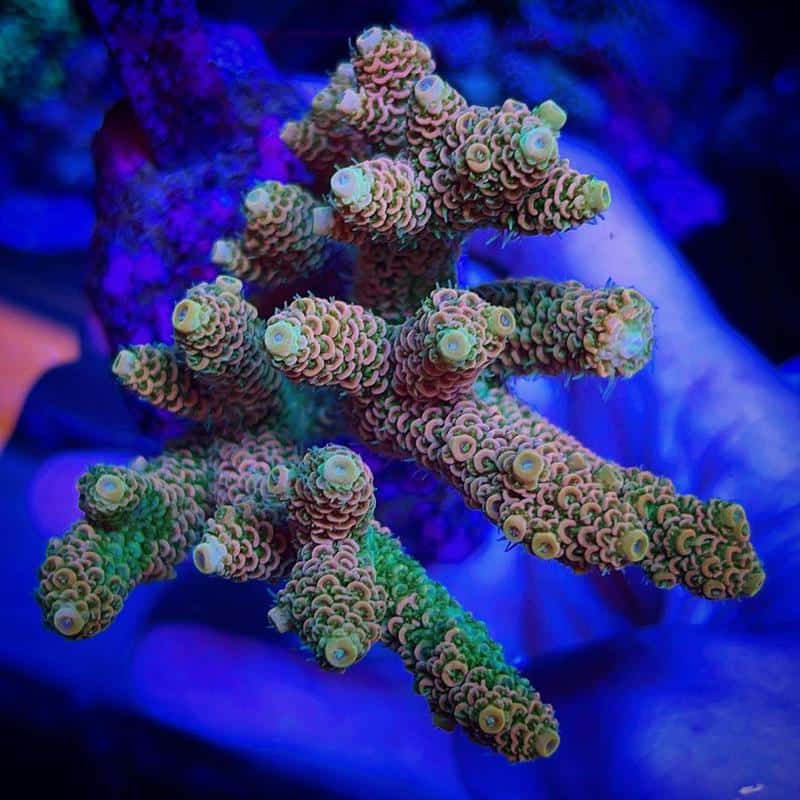
From the Greek word “hex” (which means six), Hexacorals have polyps with tentacles in multiples of six (6, 12, 18, etc). In general, the distinct feature of this type of coral is its white exoskeleton.
However, you can only see their bleach-looking skeleton when they are dead. When they are still alive, their exoskeleton has color due to the microscopic algae (zooxanthellae) living within their body tissue. But once exposed to stressors (particularly warmer temperatures), they expel the zooxanthellae and slowly die until they bleach out.
Fun fact: Corals and zooxanthellae are the perfect examples of symbiosis or a 2-way relationship. Corals get nutrition from zooxanthellae. In exchange, the zooxanthellae are protected by the exoskeleton of corals.
Octocorals
If Hexacorals have six tentacles, then Octocorals have polyps with tentacles in multiples of eight (8, 16, 24, etc). Unlike the white exoskeleton of Hexacorals, Octocoral skeletons are flexible and have color.
But surprisingly, their skeleton color does not always come from zooxanthellae. The reason for this is that not all Octocorals have zooxanthellae. For species that don’t have symbiotic algae, they get their coloration from a pigment in their outer skeletal structure.
Summary of the Differences between Hexacorals and Octocorals
| Traits | Hexacorals | Octocorals |
| # of tentacles | Multiples of 6 | Multiples of 8 |
| Natural Exoskeleton Color | White | Colored |
| Exoskeleton Hardness | Hard | Flexible |
| Exoskeleton Color Source | Zooxanthellae | Zooxanthellae and Skeletal Pigment |
Types of Corals according to Growth and Structure
Corals are highly diverse and complex. Amongst the 6,000 species of corals worldwide, they all exhibit certain physical characteristics that allow scientists to group them according to growth form and structure, such as:
Stony Corals
Also called Scleractinia or Hard Corals, Stony Corals have a hard external skeleton made of calcium carbonate. While they fall under hexacorals, they can be divided further into smaller groups based on the size of their polyp.
Small Polyp Stony Corals (SPS)
As their name suggests, SPS have small polyps. The mouth you see externally in SPS is also tiny ranging from a millimeter up to a couple of centimeters in diameter.
Similarly, SPS has miniature tentacles, allowing you to see their exoskeleton, yet exposing themselves to be attacked by corals with longer tentacles.
When their colonies develop, they form a branching or plate-like growth pattern, and aquarists love SPS for its non-aggressive behavior, vibrant colors, and fast growth rates.
If you’re considering keeping SPS in your tank, be ready for some maintenance work. Aside from intense light exposure and strong water flow, SPS are sensitive to nutrient level fluctuation, thus requiring frequent water changes and limiting the number of fish you can keep.
Giving your SPS these quality conditions allow them a monthly growth from 1 to 2 cm. But some expert aquarists were able to grow their SPS to 20 cm in just a year.
Here are some of the popular SPS corals.
Acropora
With over 180 species in their Family Acroporidae, Acropora is one of the most diverse types of corals. Having its own category in monitoring wild coral reefs (English, 1994), Acropora is so diversified that they take different growth forms like:
- Branching
- Encrusting (crawling base plate from juvenile growth)
- Submassive (robust wedge growth with knobs)
- Digitate (with finger-like projections)
- Tabulate (forms a flat table on top)
While they are fast-growers (5 – 20 cm per year), their exoskeleton is thin and brittle. Their color morphology is usually vibrant fluorescent hues, usually from a combination of brown, blue, green, red, and violet.
Some of the commonly traded Acropora includes:
Sunset Millepora – with hues of green, red, and yellow, the Sunset Millepora (Acropora millepora) is one of the most colorful Acropora. When feeding, they extend out their hairy tentacles and sway as they grab their food in midwater.
Walt Disney Tenuis – with yellow-green branches that taper to a blue-violet end, the Walt Disney Tenuis (Acropora tenuis) is one of the most sought-after Acropora in the market.
Bali Green Slimer – aside from its attractive bright green color, aquarists love the Bali Green Slimer (Acropora yongei) since they are one of the fastest-growing Acropora.
Other Acropora color morphs that you may look into are:
- Purple Monster
- Joker 2.0
- Oregon Blue Tort
- Cherry Pie Millie
- Homewrecker
- Superman Table
Montipora
Having close and densely packed polyps, Montipora belongs to the same family as Acropora. But while they also take several growth patterns (like branching and encrusting), Montipora often takes the foliose or plate-like growth.
All their 85 species have exoskeleton that are highly brittle. But being brittle, they can easily be fragmented for aquarium use.
Monti Cap (from its scientific name Monitpora capricornis) is one of the popular Montipora species traded in the aquarium industry. In particular, aquarists love the Purple Rim Monti Cap for its varying main body color and a constant purple edge.
Another priced Montipora is the Idaho Grape Montipora (Montipora undata) where its violet body with a white rim closely resembles those fruits growing in the vineyards of northwest USA.
Pocillopora
Although Pocillopora develops into a submassive and branching growth, their intertwined branches are like a cauliflower, thus its alternate name: the Cauliflower Corals.
Verrucae is one of the identifying marks in most species of Pocillopora. These wart-like growths protrude out of their exoskeleton, especially on their branches.
Pocillopora (under Family Pocilloporidae) only has 30 plus species worldwide. But despite their limited diversity, they are some of the most colorful with brown, pink, green, and purple branches that contrast with their striking neon tentacles.
Pocillopora damicornis is one of the many species fragmented and traded in the aquarium industry, with popular color morph as follows:
- Pink Pocillopora
- Green Pocillopora
- Metallic Green Pocillopora
- Rainbow Pocillopora
- Pink and Green Pocillopora
- Lemon Twist Pocillopora
- Cherry Tree Pocillopora
- Golden Rod Pocillopora
Stylophora
Pocillopora and Stylophora are close cousins and belong to the same family (Pocilloporidae). But instead of the intertwined stalks in Pocillopora, the branching exoskeleton in Stylophora are thick, flat, and blunt like a finger.
Although Stylophora has over 15 species with a variety of color morphs (green, brown, purple, and pink), what is common among them are their white-colored tips that look like the claws of a feline, thus its alternate name – the Cat’s Paw Coral.
The Milka Stylophora (Stylophora pistillata) is one of the most popular corals, not just within their family, but in the entire lineage of corals. This purple-colored coral with a white-green tip is sought by experienced aquarists since it creates a spooky effect in the aquarium.
Seriatopora
Corals under Pocilloporidae are easy to identify due to their unique branching pattern. The same goes for another member of its family – Seriatopora.
This type of coral is commonly called the Bird’s Nest Corals. Just look at their thin branches entangled with each other, and you will see why.
With a green branch partially covered with its tiny violet tentacles, the Lime Berry (Seriatopora hystrix) is one of the commonly kept corals due to its citrusy effect.
If you’re a tech-savvy aquarist, we recommend you keep the Fiber Optic Seriatopora (Seriatopora guttatus). Although it does not emit high-speed internet, its yellow-brown branch with bright green tentacles will surely radiate a unique beauty in your aquarium.
Pavona
Although they come in encrusting form, the growth of Pavona corals (Family Agariciidae) tends to become foliose. In other words, while they have a basal growth in the substrate, they grow by extending their exoskeleton vertically into thin pads, earning them it’s alternate name – the Cactus Corals.
Aside from the irregular edges and rough textured surface, what is prominent with Pavona is that their polyp mouth has no walls.
The Mint Pavona (Pavona frondifera) is one of their popular species kept in the aquarium. While its color varies from light green to yellowish brown, its white rim makes its appearance similar to a famous snack food, earning them its common name – the Potato Chip Coral.
Within their family, the purple color morph is very common, like the Purple Pavona. But just in case you’re looking for more color variety, consider taking a look at the Golden Pavona (Pavona maldivensis) where its yellow tentacles complement its soothing violet body.
Psammocora
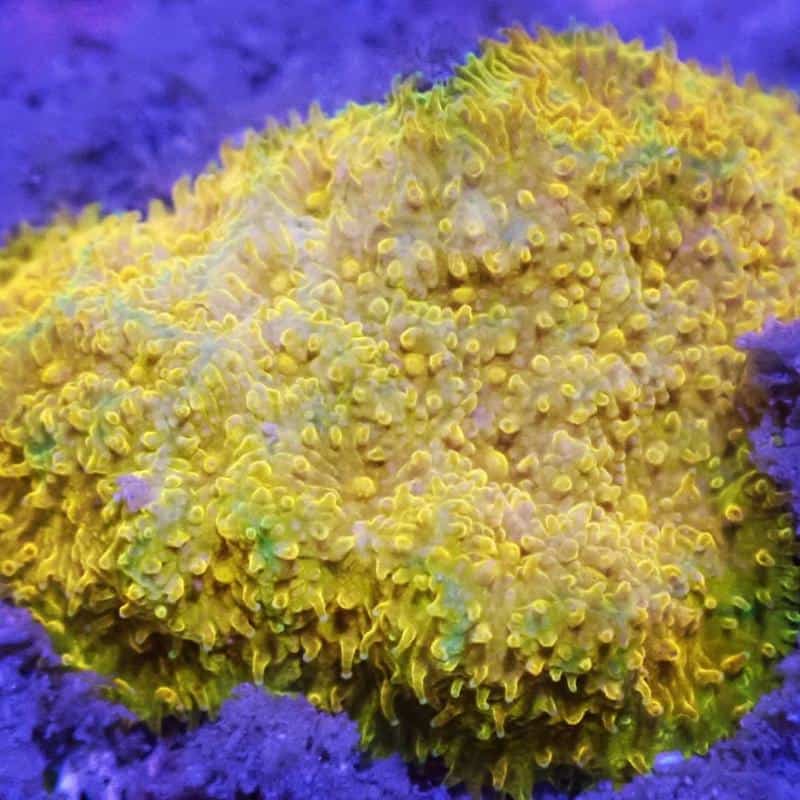
Having a grainy texture on their exoskeleton, Sandpaper Corals are often the common name given to Psammocora. While they tend to grow in a submassive and foliose pattern, most species of Psammocora are encrusting. It means that their thin and flat colonies spread and crawl along the substrate.
The yellow and green color morph of the Watermelon Psammocora (Psammocora superficialis) is a bestseller and demands on the market are always on the rise.
The purple-red color morph of the Galaxy Psammocora with its yellow tentacles and blue rim that resembles a giant celestial body, is another sought-after type of coral.
Porites
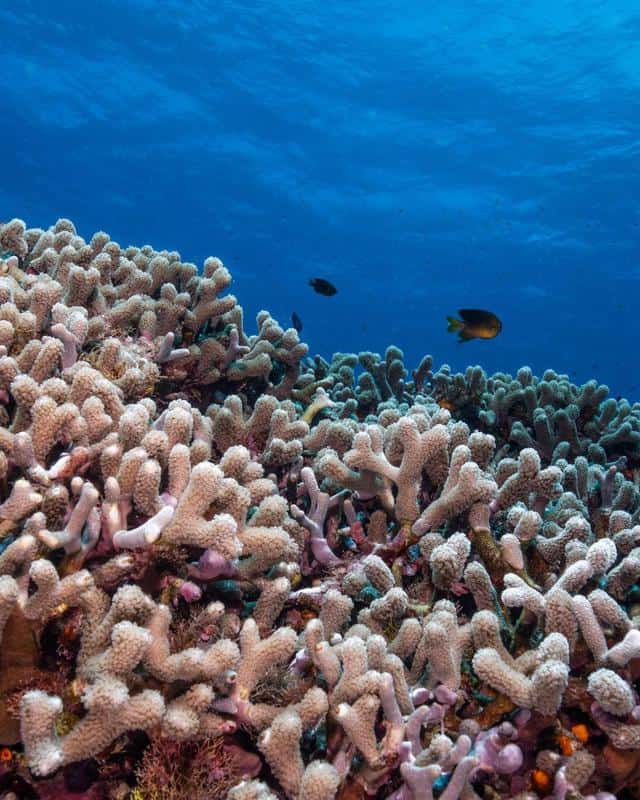
Although they are called Boulder Corals for their massive mound growth, Porites are still classified as SPS since their polyps are relatively small.
Green is a common color morph in the Porites family of Poritidae. In the Strawberry Field Porites, the body is predominantly green while the tentacles are pinky-purple like strawberries.
Similarly, there is another green-bodied Porites with a pink mouth that resembles a grumpy Christmas cartoon character – the Grinch Porites.
Large Polyp Stony Corals (LPS)
Aside from being hexacorals, most of the characteristics of LPS are the opposite of what SPS corals are known for.
LPS corals have large fleshy polyps with longer tentacles that may cover their exoskeleton and attack nearby corals, making them more aggressive than SPS. Instead of branching out like those in SPS, LPS corals tend to grow into a massive mound.
Besides adding aesthetic beauty to your tank, what aquarists love about LPS corals is they are easier to care for than SPS. Aside from requiring only moderate lighting and water flow, the greatest asset of LPS in aquarium keeping is their tolerance to nutrient fluctuation.
These are some of the popular LPS corals:
Duncanopsammia
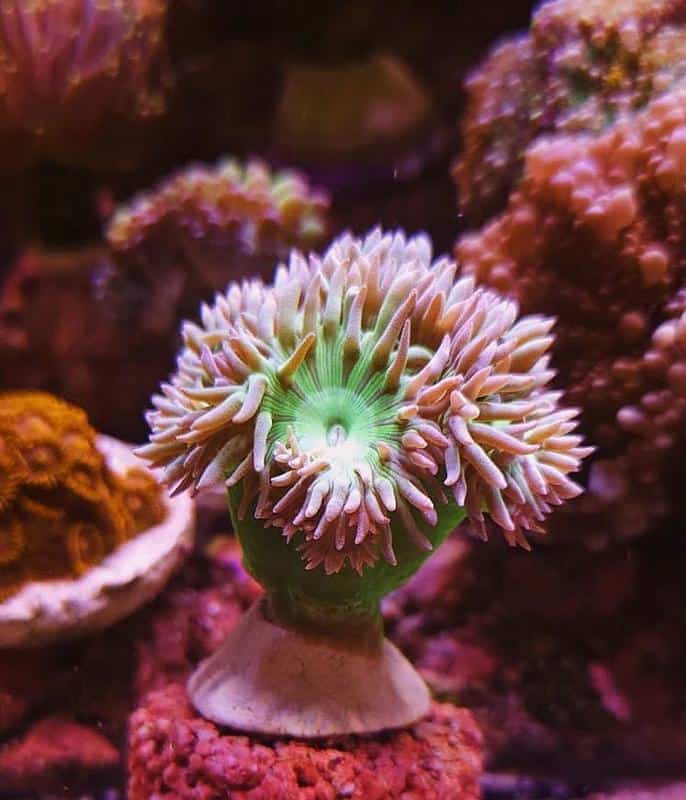
Belonging to the Dendrophylliidae Family of corals, the Duncanopsammia is monotypic. It means it only has a single species – the Duncan Coral (Duncanopsammia axifuga).
Looking at their individual polyps, you will see it is relatively large and encapsulated by a round exoskeleton half an inch in diameter. When their fat tentacles extend out, it resembles a mustache, thus its alternate name – the Whisker Coral.
Since their polyp together with their exoskeleton can easily be detached from their colony, what aquarists do is fragment them into smaller segments for aquarium keeping.
One of its popular frags is the Fathead Duncan Coral. From its robust stalk, it bulges out into its mouth with its fleshy tentacles waving as they wait for food.
Euphyllia
Corals in the Euphylliidae family have one of the longest tentacles in the LPS coral category. An example is Euphyllia. Its tentacles are long and prominent, becoming the basis of its species classification.
In the Hammer Coral (Euphyllia ancora), the tentacle tips are hammer-shaped, while the relatively long and brightly-colored tentacle tips of the Torch Coral (Euphyllia glabrescens) look like a waving flashlight. As for the Frogspawn Coral (Euphyllia divisa), the tentacles are not long, but the tips resemble frog eggs.
Catalaphyllia
Another monotypic coral in Family Euphylliidae is Catalaphyllia, represented by its lone species – the Elegance Coral (Catalaphyllia jardinei).
This coral is one of the few LPS that can live either as a lone polyp or in a colony. But regardless of their growth form, they are sought by experienced aquarists since their green exoskeleton with pink tubular tentacles adds (if not, improves) the aesthetic elegance of their aquarium.
Leptastrea
Forming spherical ridges, Leptastrea grows into a massive colony. They are commonly called Star Corals due to the dense arrangement of their polyp mouth with moderate size tentacles. When swaying, their medium tentacles mimic the twinkling of intergalactic constellations.
Of its over 15 species in their Family Leptastreidae, the Polkaroo Leptastrea (Leptastrea purpurea) is one of the most popular frag. Its yellow-colored exoskeleton that is feathered with green tentacles resembles a mythical character whose name is a combination of polka dots and kangaroo.
Lobophyllia
If you have seen a brain-looking coral either in an aquarium or in a natural reef, then most probably you have seen a Lobophyllia. These massive growing corals are large, round and their polyps are winding which folds and ridges like a brain.
In some cases, they initially take the encrusting growth form before they grow into massive colonies. A perfect example of this is the Carpet Lobo (Lobophyllia flabelliformis) where its brown body, green mouth, and yellow tentacles look like an indoor mat.
Cynarina
Doughnuts are round and enticingly colorful, and so does Cynarina or the Doughnut Coral. While they are round, they don’t have center holes like in the famous snack. Instead, the hole is replaced by their polyp mouth where its oral slit is visible to the naked eye.
While they have many fragment names (like the Rainbow Master Cynarina and the Kaleidoscope Cynarina), they all belong to one species – Cynarina lacrymalis.
Acanthastrea
Most of the massive growing LPS corals create a spherical mound. However, this is not the case for Acanthastrea or simply Acan. While they still have a massive growth, they flat out at the top giving you the impression that they also take the encrusting growth form.
Within the Acanthastrea genus, it has over 5 species and all of them extend out their tentacles only at night. For color morph, the Acan Lord (Acanthastrea lordhowensis) can exhibit a variety of color morphology and is popular in the aquarium hobby.
Echinophyllia
Not all LPS corals grow into a massive or encrusting growth form. In the case of Echinophyllia, they take the foliose growth. This coral is bowl-shaped with thin leafy plates that have ridges and valleys on the surface, earning them their alternate name – the Chalice Corals.
Favites
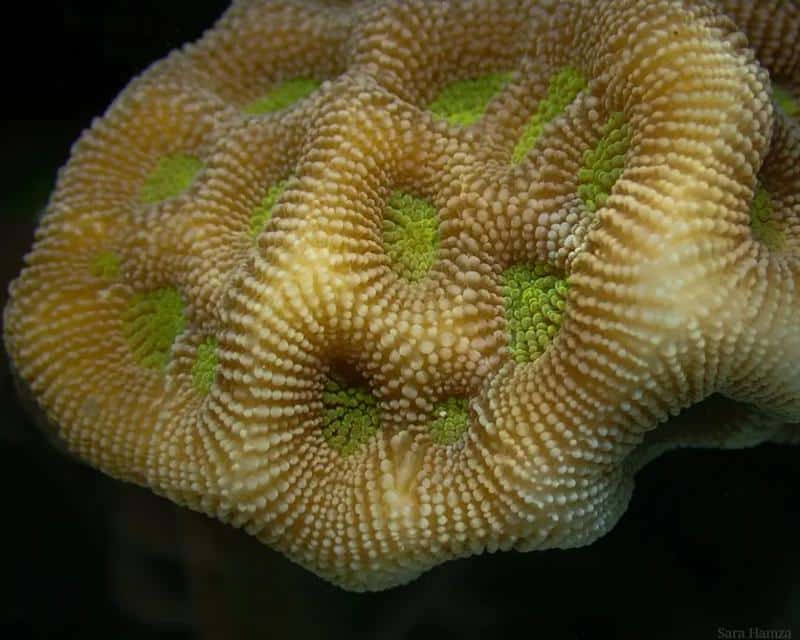
Also called Moon Corals, Favites have closely set polyps with mouths that are deeply embedded in their exoskeleton, resembling the lunar surface. The closely knit polyps of Favites have also earned them another name – the Honeycomb Corals.
Of their 14 species worldwide, the Green-Eyed Moon Coral is one of the most popular. You can easily notice why they are named as such since the violet walls encircling their mouth perfectly contrast their green-colored bodies.
Soft Corals
As their name suggests, Soft Corals don’t possess hard exoskeleton. Instead, their bodies are fleshy and flexible.
In the aquarium hobby, they are generally termed “softies” and some of their examples include:
Leather Corals
Bearing no exoskeleton, Leather Corals are as fleshy as leather. While they have over 40 species, they are best represented by the tall-stalking and large-capped Toadstool Coral (Sarcophyton sp.) and the slender branching lobes of the Finger Leather Coral (Sinularia sp.).
Xenia
When we speak of coral tentacles, we often associate them with waving and swaying. However, the tentacles of Xenia don’t just go into this type of motion, as they also pulsate, thus its alternate name – the Pulse Coral.
Tree Corals
Seldom do corals develop tree-like growth, but with the soft corals under Family Nephtheidae, they do. Examples of these Tree Corals are the white trunk and red tentacles of the Carnation Coral (Dendronephthya sp.) and Colt Coral (Cladiella sp.).
Zoanthids
At a glance, you may think that Zoanthids are massive corals. No. Instead, their tubular, brightly colored, and colonial polyps develop into a mat-type growth. They are composed of over 300 species like the dense matting of Zoanthus and the toxic Palythoa.
Gorgonians
Another tree-like growing coral, but with tiny spiky protrusions, is the Gorgonians. Although they look stiff and encased, they do not have a hard exoskeleton like corals have. Instead, the stiffness in Gorgonians is brought by a protein-based skeleton called gorgonin. This thin exoskeleton-like encasement of Gorgonians helps their colony develop vertical growth.
Some examples of Gorgonians include the Venus Sea Fan (Gorgonia sp.), the Swollen Knob (Eunicea sp.), and the Spiny Sea Fan (Muricea sp.).
Hydrocorals and Coral-like Traits
Having the same body structure, stinging tentacles, and close colonial resemblance with stony corals, you may think that Hydrocorals are a type of coral. No, they are not, since they belong to a group called hydrozoans.
While they encrust, Hydrocorals do not possess a massive or foliose growth. Instead, they branch into a flat vertical stem that looks like a standing sea fan.
The best example that can represent Hydrocorals is the Fire Corals (Millepora). They have the same calcium carbonate exoskeleton that is usually colored yellowish-brown. But what we would like to highlight is their tentacles. Despite being tiny creating a hairy appearance when extended out, they sting more than true corals.
When you accidentally get in contact with Fire Corals (which I did before), their stinging cells are immediately ejected to your skin creating a burning sensation.
Read More:
Coral Types: FAQs
Do Colonies of Several Types of Corals Form a Reef?
Yes. When several colonies from different types of corals join and bond together, they form a living reef. Although the size of aquarium reefs depends on how large your tank is, natural reefs in the wild are massive.
An example is the 2,300-kilometer-long Great Barrier of Australia, where this largest reef system in the world houses over 600 types of corals.
Do All Types of Corals Have Stinging Tentacles?
No, especially in Soft Corals. Instead of using their tentacles to sting their prey, Soft Coral tentacles are used in filter feeding and to grab tiny food particles.
Why Are Shop-Sold Corals Smaller than Wild Corals?
Wild corals are whole and intact. When they are bred and prepared for aquarium keeping, they are usually fragmented into smaller clusters to fit your tank. It is why most shop-sold corals are smaller than wild corals.
Is There a Solitary Type of Coral?
Most corals are colonial. However, there are a few species of corals that are solitary, like the Mushroom Coral (Fungia sp.). Within its disk-shaped exoskeleton is a solitary polyp and they are not attached to the substrate like most corals do.
Final Thoughts
Projected to be wiped out due to the warming of our oceans, wild corals are the main subject when it comes to the effect of climate change.
All types of corals are sensitive to change and this is challenging when it comes to keeping them in the tank (not to mention the challenge saltwater tanks demand).
At the end of the day, knowing the different types of corals is not sufficient. You should also learn how to keep and grow them and this means spending time and money.
So, if you’re not willing to accept the challenge and level up your skills as an aquarist, don’t keep corals. Otherwise, what you will have is another type of coral – dead corals.
